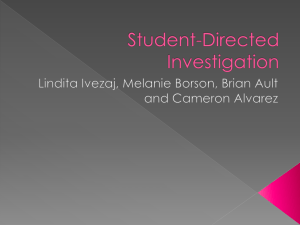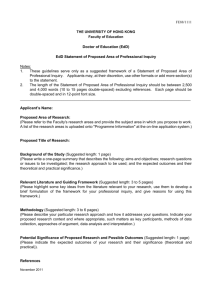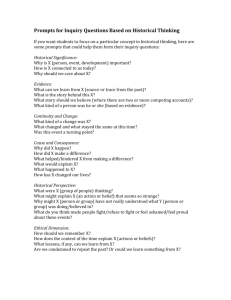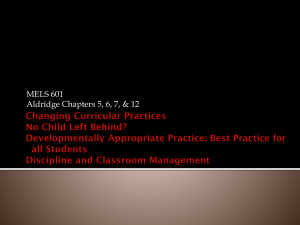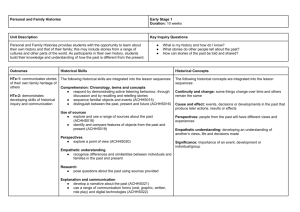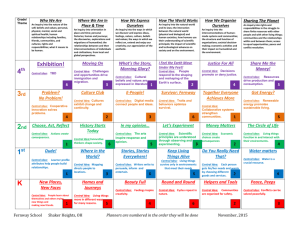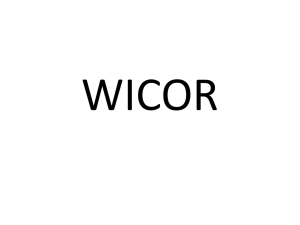Brief History of Inquiry Teaching.
advertisement
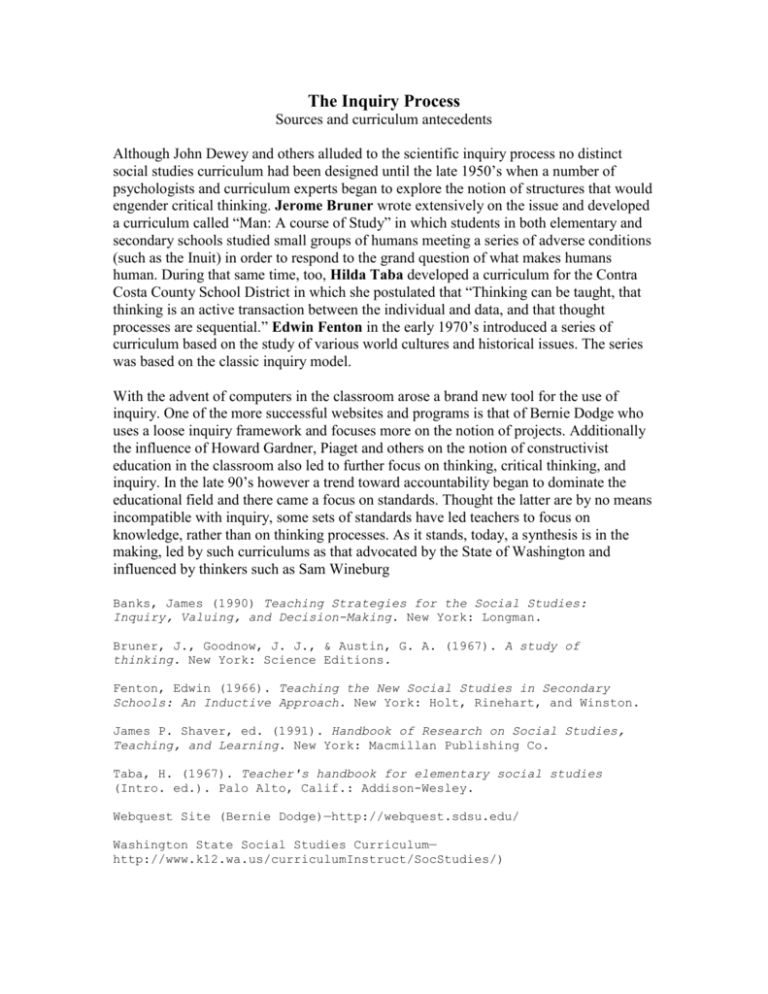
The Inquiry Process Sources and curriculum antecedents Although John Dewey and others alluded to the scientific inquiry process no distinct social studies curriculum had been designed until the late 1950’s when a number of psychologists and curriculum experts began to explore the notion of structures that would engender critical thinking. Jerome Bruner wrote extensively on the issue and developed a curriculum called “Man: A course of Study” in which students in both elementary and secondary schools studied small groups of humans meeting a series of adverse conditions (such as the Inuit) in order to respond to the grand question of what makes humans human. During that same time, too, Hilda Taba developed a curriculum for the Contra Costa County School District in which she postulated that “Thinking can be taught, that thinking is an active transaction between the individual and data, and that thought processes are sequential.” Edwin Fenton in the early 1970’s introduced a series of curriculum based on the study of various world cultures and historical issues. The series was based on the classic inquiry model. With the advent of computers in the classroom arose a brand new tool for the use of inquiry. One of the more successful websites and programs is that of Bernie Dodge who uses a loose inquiry framework and focuses more on the notion of projects. Additionally the influence of Howard Gardner, Piaget and others on the notion of constructivist education in the classroom also led to further focus on thinking, critical thinking, and inquiry. In the late 90’s however a trend toward accountability began to dominate the educational field and there came a focus on standards. Thought the latter are by no means incompatible with inquiry, some sets of standards have led teachers to focus on knowledge, rather than on thinking processes. As it stands, today, a synthesis is in the making, led by such curriculums as that advocated by the State of Washington and influenced by thinkers such as Sam Wineburg Banks, James (1990) Teaching Strategies for the Social Studies: Inquiry, Valuing, and Decision-Making. New York: Longman. Bruner, J., Goodnow, J. J., & Austin, G. A. (1967). A study of thinking. New York: Science Editions. Fenton, Edwin (1966). Teaching the New Social Studies in Secondary Schools: An Inductive Approach. New York: Holt, Rinehart, and Winston. James P. Shaver, ed. (1991). Handbook of Research on Social Studies, Teaching, and Learning. New York: Macmillan Publishing Co. Taba, H. (1967). Teacher's handbook for elementary social studies (Intro. ed.). Palo Alto, Calif.: Addison-Wesley. Webquest Site (Bernie Dodge)—http://webquest.sdsu.edu/ Washington State Social Studies Curriculum— http://www.k12.wa.us/curriculumInstruct/SocStudies/)
